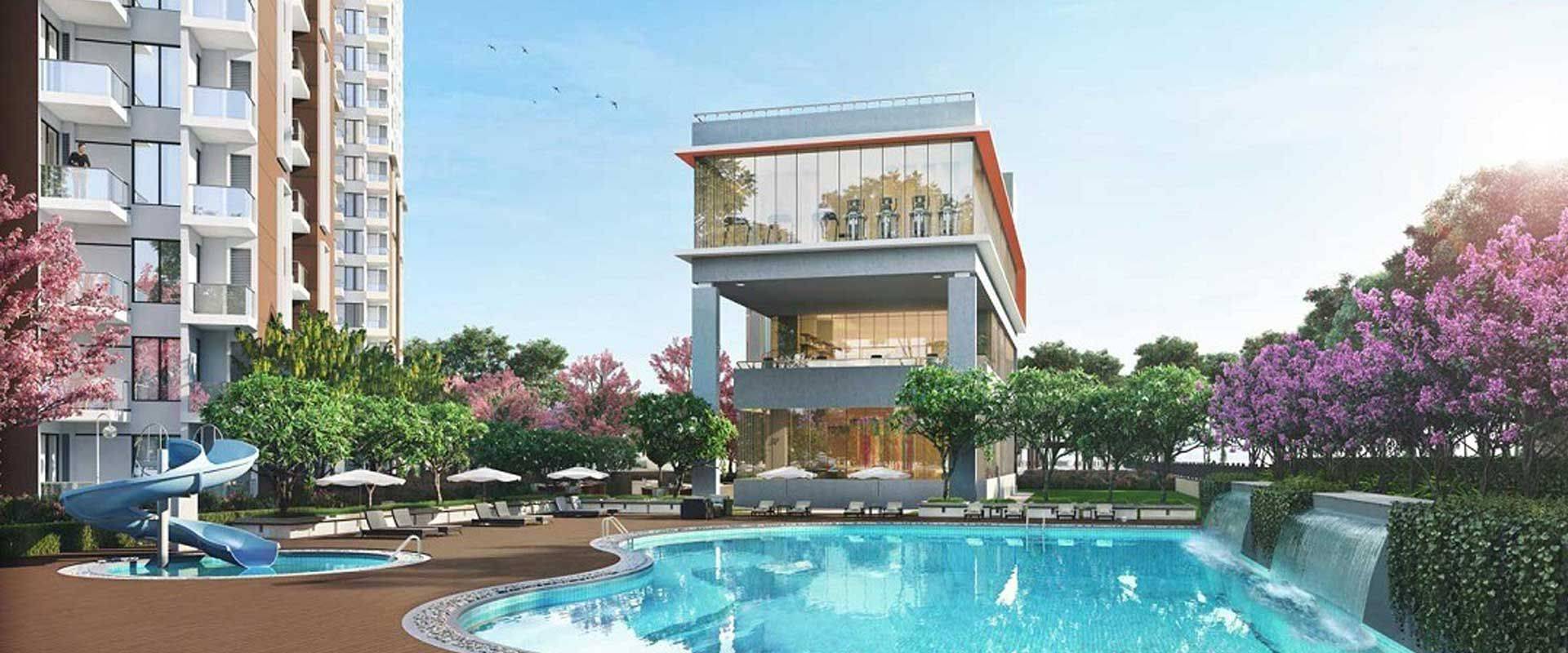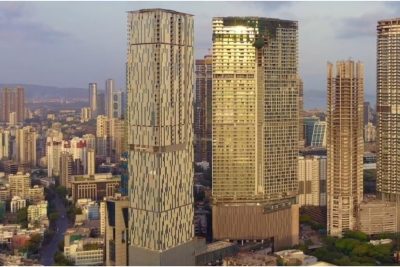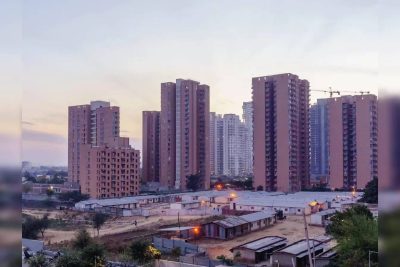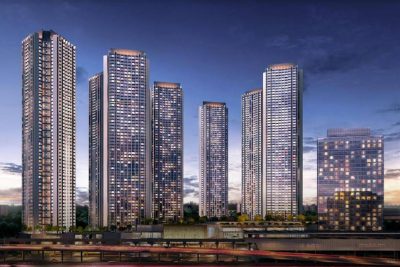In the realm of real estate, I have been a steadfast observer of the ever-evolving Indian property market. Over the years, I’ve seen the industry navigate numerous transformations and confront various challenges. The COVID-19 pandemic, in particular, has propelled certain trends to the forefront. These trends encompass a shift from urban to suburban living, a heightened demand for spacious and comfortable homes, an increased reliance on digital technologies, and a newfound emphasis on sustainability and well-being. In this article, I will share some of my insights and observations on how these trends are shaping the future of real estate in India, and what are the opportunities and risks for developers, investors, and buyers.
The Rise of Suburban Living – One of the most evident effects of the pandemic has been the significant migration of individuals from bustling, cost-intensive urban centers to serene, opulent, and spacious suburban environments. The escalating demand for residential properties in the peripheral zones of major cities such as Delhi, Mumbai, Bengaluru, and Chennai are on rise. This shift has been underpinned by the widespread adoption of remote work arrangements, a growing desire for heightened privacy and security, and the presence of superior infrastructure and amenities in suburban locales. According to the findings of the ANAROCK Consumer Sentiment Survey conducted in the first half of 2023, Over 81% of investors are looking to invest in peripheral or suburban areas.
This notable trend can be attributed to several key factors:
- Remote Work Adoption: The continued prevalence of remote work arrangements has allowed individuals greater flexibility in choosing their place of residence. With less dependence on physical office locations, many are opting for suburban areas where they can enjoy a quieter and more spacious living environment.
- Desire for Privacy and Security: The desire for enhanced privacy and security has grown significantly in the wake of the pandemic. Suburban areas often offer a sense of seclusion and lower population density, which aligns with this newfound preference for safety and privacy.
- Superior Infrastructure and Amenities: Suburban locales have been investing in infrastructure development and amenities to cater to the evolving needs of residents. This includes improved healthcare facilities, educational institutions, recreational spaces, and shopping centers. As these amenities become more readily available in suburban areas, they become more attractive for prospective luxury homeowners.
- Quality of Life: The shift to suburban living reflects a broader trend in seeking an improved quality of life. Suburbs often offer cleaner air, more green spaces, and a quieter atmosphere, contributing to a more fulfilling lifestyle. Luxury suburban areas offer access to high-quality services, including education, healthcare, and entertainment options, enhancing the overall lifestyle.
- Enhanced Connectivity: Thanks to well-developed highways, metro rail networks, and nearby airports, luxury suburban living provides residents with convenient access to urban centers and transportation hubs.
- Thriving Integrated Township Developments: Luxury integrated township developments in suburban areas provide residents with diverse mixed-use spaces, creating a self-contained, upscale living environment.
- Cost-Effective Living: Luxury suburban living is associated with an improved overall quality of life compared to bustling urban hubs, making it an attractive option for those seeking a luxurious and serene residential experience.
For instance, take the TARC Maceo project, located in Gurugram’s Sector 91 on the outskirts of Delhi, which epitomizes the essence of luxurious suburban living. This project goes beyond offering spacious and tranquil apartments and penthouses; it also emphasizes sustainability as a core feature. TARC Maceo incorporates environmentally conscious practices, including rainwater harvesting, wastewater treatment, and the utilization of solar panels, all of which align with the discerning preferences of luxury homeowners. The ultimate goal here is to provide residents with nothing short of the finest living experience, where luxury seamlessly coexists with eco-conscious living.
The Demand for More Space and Comfort – Pandemic-induced lifestyle changes have intensified the demand for spacious and comfortable homes. As individuals spend more time indoors, they seek residences that can cater to diverse activities like work, study, exercise, relaxation, and entertainment.
Homebuyers are increasingly showing a preference for larger residences with additional rooms and open spaces, alongside a notable inclination toward enhanced ventilation, natural light, and green surroundings. This shift in preference includes a desire for larger and spacious apartments. Prospective buyers are also placing greater emphasis on the layout of apartments, the presence of balconies, and additional rooms for work or online classes. Furthermore, the definition of a ‘great location’ has evolved, with equal or even greater emphasis being given to features such as access to healthcare and proximity to open spaces like parks, gardens, and green areas.
As of 2023, sales of premium segment apartments are on a strong footing, particularly catching the buyers’ attention, with a rising demand for bigger homes with good amenities and support infrastructure. Notably, the share of affordable segment apartments in quarterly sales has declined, while the premium segment has seen an increase in its market share, reflecting the shift towards luxurious suburban living.
Key factors driving this demand for spacious and comfortable suburban living include:
- The need for dedicated workspaces for productivity.
- Desire for multifunctional spaces to accommodate various activities.
- Preference for outdoor spaces, including balconies and gardens.
- Aspiration for premium features like smart home devices and walk-in closets.
Many real estate projects in various regions are now focusing on creating residential spaces that prioritize natural surroundings and spacious living. These developments recognize that it’s no longer just about living; it’s about making luxury living a necessity in today’s evolving preferences.
Embracing Digital Technologies – The pandemic has not only accelerated the adoption of digital technologies in the real estate sector but has also paved the way for a more promising and authentic future. In a world where physical movement was restricted, online platforms and tools have become an integral part of the real estate ecosystem, offering convenience and efficiency to both developers and buyers alike.
The key drivers of this digital transformation include
- Enhanced Internet Connectivity: Providing a seamless environment for online transactions, making property buying and selling smoother and more accessible.
- User-Friendly Platforms: Interactive and user-centric platforms that offer immersive experiences, simplifying property exploration and decision-making.
- Innovative Online Business Models: Pioneering approaches to online real estate transactions that cater to the evolving needs of buyers and sellers, ensuring a dynamic and competitive market.
- Integration of Data Analytics and Artificial Intelligence: Leveraging advanced technologies to analyze data-driven insights, predict market trends, and provide personalized recommendations, enhancing the overall real estate experience.
This digital revolution is not just a response to a momentary crisis but a testament to the industry’s commitment to delivering modernization, convenience, and authenticity in the real estate sector.
Prioritizing Sustainability and Wellness in Real Estate – The pandemic has underscored the significance of sustainability and wellness in the real estate industry. Increasing awareness of the environmental and social impacts of real estate development has led to a growing demand for homes that promote a healthy and responsible lifestyle.
Recent industry insights reveal a rising demand for green residences, with tenants benefiting from energy savings and enhanced productivity, while property owners enjoy increased asset value. Additionally, companies’ heightened focus on sustainability and wellness is driving a move towards green buildings.
Key factors highlighting the importance of sustainability and wellness in real estate include
- The need for energy-efficient and resource-conserving properties.
- An emphasis on effective waste management and pollution control.
- Prioritization of safety and security measures.
- A growing focus on wellness and overall well-being.
These factors represent a broader industry shift towards sustainable and wellness-oriented real estate, catering to the evolving preferences of both individuals and businesses.
For example, various coming-up wellness-themed projects in Mumbai, offer apartments designed with biophilic principles, emphasizing natural elements and various wellness amenities.
Again mentioning the TARC Maceo project, as it boasts Club Tierra, a grand four-level clubhouse replete with opulent amenities, including squash courts, a swimming pool, a gym, a yoga and meditation room, a restaurant, an amphitheater, a lounge, a kids’ play area, and various other facilities. Additionally, multi-level security measures provide a secure environment for residents, and the presence of a preschool adds convenience for families.
The Indian real estate sector is undergoing a profound transformation, shaped by evolving buyer preferences. Trends like suburban living, spaciousness, digitalization, sustainability, and wellness are defining its future, offering novel prospects and challenges for stakeholders. As a real estate expert, recognizing and meeting buyers’ evolving needs with innovative solutions is the key to success in this dynamic and competitive market. Furthermore, the sector plays a pivotal role in fostering a brighter future for society and the environment.
Source : Realty Plus




